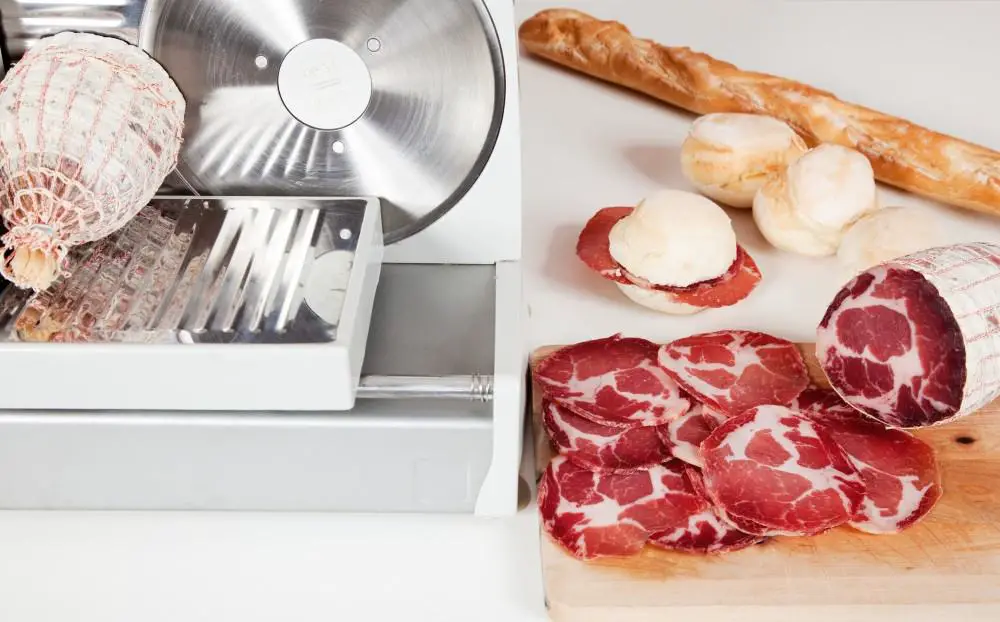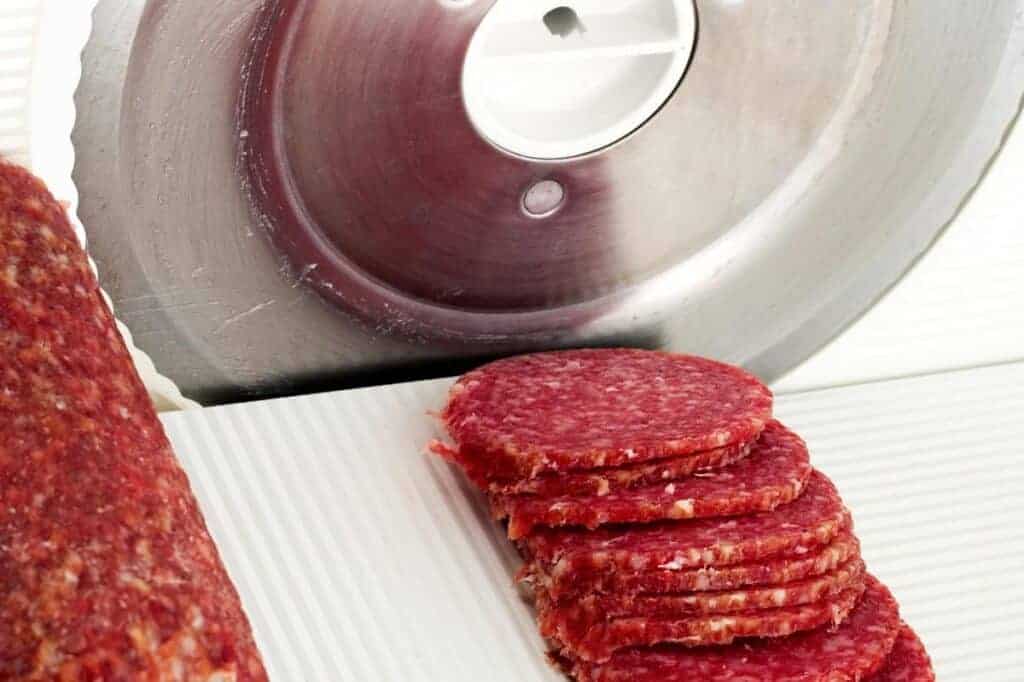This post contains affiliate links. As an Amazon Associate I earn from qualifying purchases
If you fancy yourself as a professional cook, you may wish to consider the use of a meat slicer. Sure, you could chop each piece of meat individually, by hand. But eventually, you are probably going to get worn out from such a boring activity. And let’s face it, though you might enjoy being in the kitchen for hours on end, you certainly do not want to be in there forever.
Meat slicers are typically used in butcheries and in delis. Most people don’t need a guess as to what they are used for. Generally, they are a mostly commercial product, but recent years have brought about domestic-use versions as well.
They are great if, like any good carnivore, you prefer your meat in bulk. Being able to slice and dice stacks of meat quicker than a knife, they can find great use in any sizable kitchen.
A great deal of your meat slicer’s efficacy somewhat depends on which type of blade you use. These blades typically come in two forms – serrated and non-serrated (or smooth).
In this article, we are going to take a look at both, and by the end, you should have a clearer idea about which to choose. So, read on.
Table of Contents
Serrated Meat Slicer Blades
Unlike their skinnier, smooth-edged cousins, serrated blades have jagged edges which form a series of teeth along the blade. Think of them as rotating circular bread knives.
In fact, that being said, these serrated blades are actually best for slicing hard bread. They are ideal because while they can easily cut through bread, they will not cause damage to the crust itself. This is unlike non-serrated blades, which have a harder time actually cutting through the bread, let alone leaving it in an undamaged state.
Now, it is true that in most cases you will want a smooth blade for meat-slicing (more on that in a bit). But another part where non-serrated blades tend to struggle more is in slicing through lean meats, like game meats such as venison or bison. Anything that needs a bit more grip to cut into will be easier with a serrated blade.
Smooth (Non-Serrated) Meat Slicer Blades
Another title this type of blade holds to its name is “fine-edge”, but its smooth edge is not the only thing that is fine. Because of its thinner, consistently-sharp blade, non-serrated blades are better at producing more finely-sliced pieces, while still managing not to damage them in the process.
They are also more universal in their use, hence their popularity over serrated blades. If you go into any deli and look towards their kitchen, you will probably find a smooth blade before you find a serrated one.
While not ideal for cutting through tougher meats, they can be used on most others, and as we have said before, can give you some really thin, elegant carvings. A good example of this is when a smooth blade is used to slice cured ham into wafer-thin pieces of prosciutto. They are also excellent when it comes to things like vegetables, cheese, and even sushi. The thinner you want whatever it is you are slicing, the more you will want a non-serrated blade.
After all, try and imagine slicing a block of cheese with a serrated blade.
Meat Slicer Serrated Blade vs Smooth Blade: Which one to Choose?
Now that you know the differences between the two types of blades, you may have already come to the conclusion about which you want first. And if not, we are here to lay it out for you, measuring the pros and cons of each. Keep in mind that any slicer can probably get the job done; how refined that end product is though, will be dependent upon which you choose.
So, straight off the bat, we would recommend that you get yourself a non-serrated blade first. They are good enough to get pretty much any job done. They are perfect for just about any cut of meat that you buy from your local butcher, and any other fruit, vegetables or cheeses you consume.
Honestly, even if you do need something tougher sliced, a non-serrated blade can still perform its function, albeit with a possibly messy result.
Now, if you live on a diet of tough meat and hard bread, it is probably wise to get yourself a serrated blade instead. If you are regularly chopping game-meat for a family of five, or a large gathering of people, a serrated blade is the right choice for you. It is just immensely satisfying watching your blade cut through some venison or other game-meat as though it were sandwich ham.
If you have the money, we would actually recommend that you buy both.
Last-Minute Tips
With everything considered, hopefully by now you know exactly which blade to use. And with that being said, we want to provide you with some quick tips to ensure that you get the most out of your meat slicer.
- Do not try to slice your meat as soon as it is out of the oven. It needs proper time to rest.
- While this may seem obvious, keep your meat slicer and it’s blades out of the reach of children, especially when it is in use.
- Make sure your blades are securely attached to your slicer before using it.
- Keep the power button off and the meat slicer unplugged whenever you are not using it.
Conclusion
By now you should know all that you need to when it comes to meat slicer blades. Be sure to do some extra research about meat slicers in general before you purchase one. Other than that, good luck with all your slicing and dicing.


